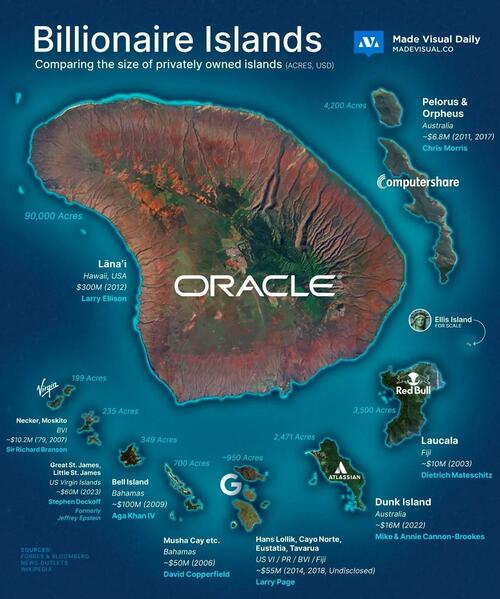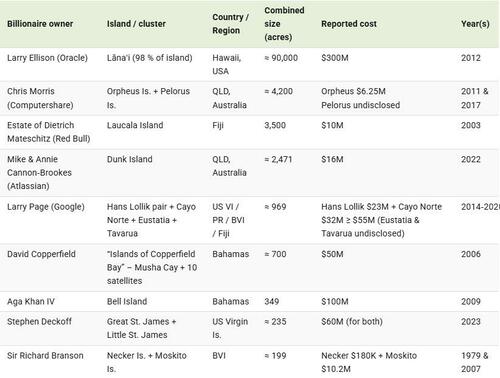From Coastal Australia to the turquoise waters of Fiji, billionaires have snapped up private islands as the ultimate status symbols.
The graphic below, by Made Visual Daily, compares the acreage and sticker prices of some of the best-known billionaire islands, revealing just how uneven the market is.
Why Size Isn’t Everything
Island valuations depend on far more than acreage alone. Proximity to major airports, protected harbors, and existing resort infrastructure can drive prices exponentially higher. Bell Island’s $100 million price tag for just 349 acres reflects its prime location in the Exumas archipelago in The Bahamas, a renowned luxury-yacht destination with established high-end amenities.
The location premium becomes clear when comparing cost per acre: Bell Island costs roughly 87 times more per acre than Lānaʻi, demonstrating that exclusivity and accessibility often outweigh sheer size in determining value.
The Tech Billionaire Land-Grab
Technology entrepreneurs have emerged as dominant players in the private island market. There are a few reasons behind this trend:
Unprecedented wealth accumulation: The tech boom has created liquidity that enables nine-figure recreational purchases previously reserved for oil barons and industrial magnates.
Remote work capabilities: Modern satellite communications and digital infrastructure allow tech leaders to maintain business operations from virtually anywhere, making isolated islands viable as working retreats.
Privacy and security concerns: High-profile tech executives increasingly seek refuges from public scrutiny and potential security threats, with private islands offering unparalleled isolation and control.
Cost per Acre: The Luxury Premium
The private island market reveals stark disparities in pricing based on location and amenities. Ellison’s $300 million acquisition of 98% of Lānaʻi in 2012 included not just land but two Four Seasons resorts, championship golf courses, and existing infrastructure serving the island’s 3,000 residents.
In contrast, smaller Caribbean properties like the Aga Khan’s Bell Island purchase command premium prices due to their proximity to established luxury tourism circuits and superior accessibility via private aircraft and superyachts.
This market segmentation suggests that beyond a certain size threshold, factors like location, climate, and existing development become the primary value drivers rather than raw acreage.
What are the world’s most populated islands? Find out with this post on the Voronoi App.
Loading recommendations...

